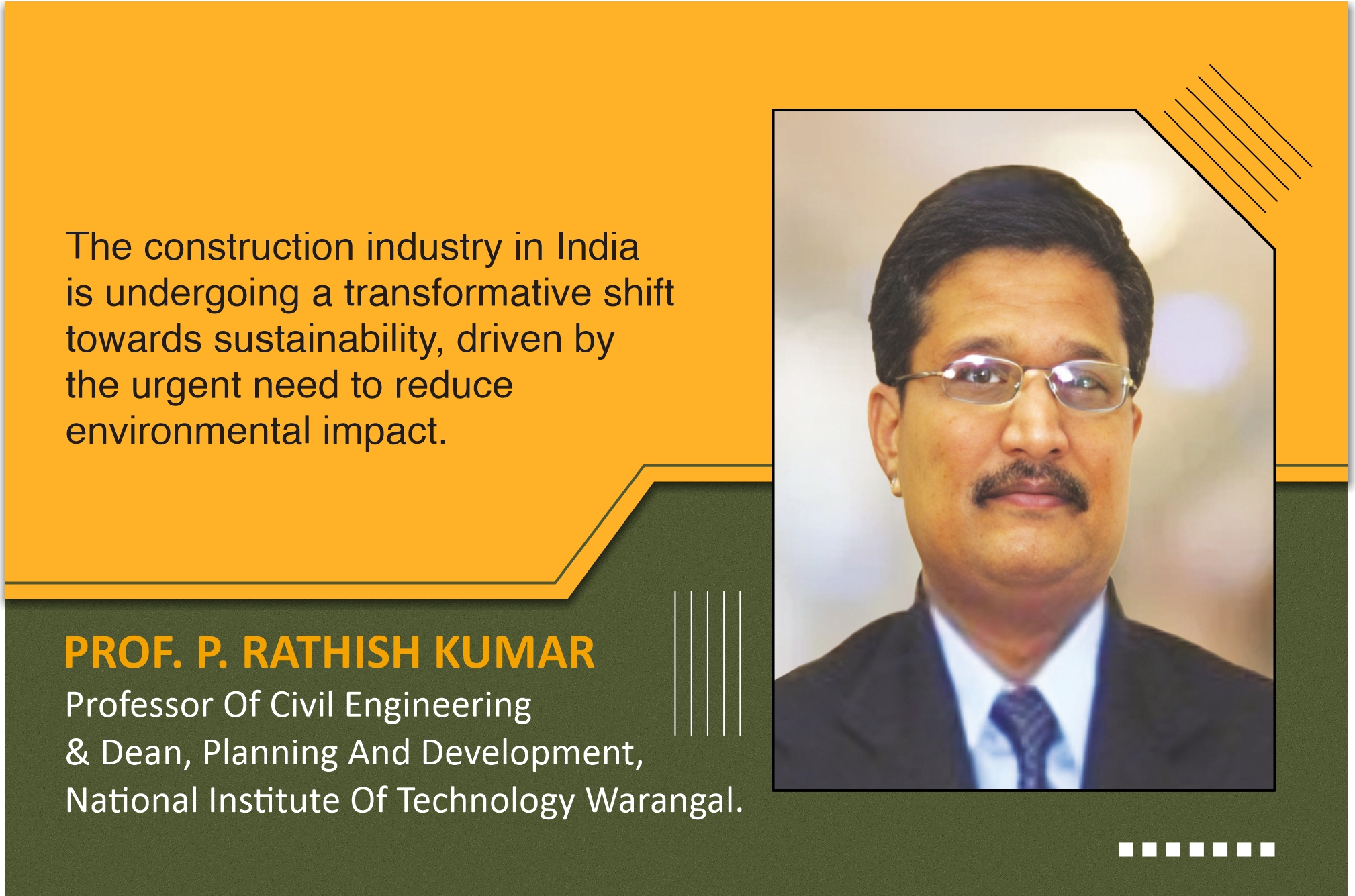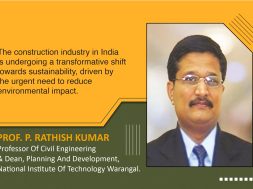Circular economy in action: Turning waste into sustainable construction resources

Concrete, the most widely used construction material globally, is the focal point of this transition because of its significant carbon footprint.
Adopting sustainable concrete redefines the construction industry by incorporating innovative materials and technologies that align with global sustainability goals. A key advancement in sustainable concrete is using agro-waste and industrial by-products. Of late, materials like rice husk ash, sugarcane bagasse ash, and coconut shells are being used as supplementary cementitious materials (SCMs), which has significantly reduced the dependence on Portland cement, a major contributor to CO₂ emissions. This approach supports the circular economy by repurposing agricultural residues and turning waste into valuable resources. Additionally, bio-based materials like bio ash and biochar enhance concrete’s strength and durability and help sequester carbon, improving performance in harsh environments.
Industrial by-products, such as fly ash, silica fume, and ground granulated blast furnace slag (GGBS), replace cement in concrete mixes. These materials reduce the need for natural resources, minimise landfill waste, and lower emissions. Recycled aggregate concrete (RAC), made from construction and demolition waste, further supports sustainability by conserving natural aggregates and reducing landfill requirements. Together, these practices help conserve resources and promote waste valorisation, key components of sustainable construction.

Smart materials and technologies are also transforming the construction sector. Self-healing concrete, infused with bacteria or microcapsules, can repair cracks autonomously, extending the lifespan of structures and reducing maintenance costs. Shape memory alloys, which respond to environmental stimuli, enhance seismic performance, while smart glass adjusts transparency to regulate light and heat, improving energy efficiency. Technologies like phase change materials and piezoelectric materials enable better thermal regulation and energy harvesting. Nanomaterials also improve the strength and functionality of concrete, while self-cleaning coatings reduce maintenance needs.
In addition to these materials, smart technologies such as Building Information Modelling (BIM), 3D printing, and IoT-enabled sensors are streamlining the construction and maintenance processes. These technologies remarkably improve precision, reduce material waste, and lower energy consumption, contributing to the industry’s overall sustainability. However, challenges remain, including the high costs and complexity of integrating these technologies on a large scale. Significant research is underway to overcome these barriers and make sustainable materials and technologies more accessible.
Sustainable practices in concrete production are not limited to material innovation. Carbon capture and utilisation (CCU) technologies are being integrated into concrete production to sequester CO₂, turning emissions into resources. These technologies have the potential to create carbon-neutral and carbon-negative concrete products. Carbon capture, by mineralising CO₂ into calcium carbonate during curing, aligns with India’s commitment to achieving net-zero emissions by 2070. Integrating artificial intelligence (AI) and machine learning (ML) in concrete mix design optimisation further enhances sustainability. Predictive modelling can tailor solutions that balance sustainability, cost, and performance, enabling the production of greener concrete.
By adopting these sustainable practices, the Indian construction industry can significantly reduce its carbon footprint. These innovations contribute to the country’s sustainable development goals (SDGs) and the global fight against climate change, offering a promising path towards a more sustainable and resilient built environment for future generations.
Cookie Consent
We use cookies to personalize your experience. By continuing to visit this website you agree to our Terms & Conditions, Privacy Policy and Cookie Policy.










